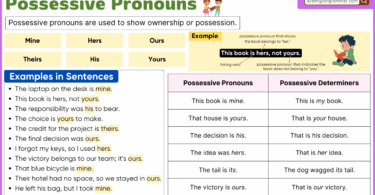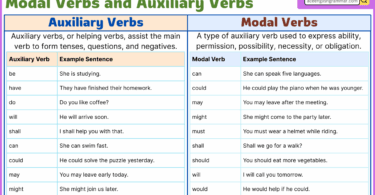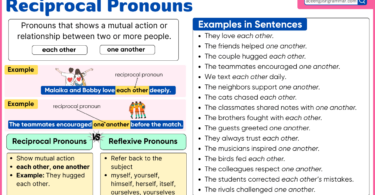Prepositions are essential grammatical elements that connect nouns, pronouns, and phrases to other words in a sentence. They provide information about the relationship between different parts of a sentence, such as time, place, or direction. The object of a preposition is the noun or pronoun that follows a preposition. In this article, we’ll define the object of a preposition, explain its role in a sentence, and provide examples to help you understand how to use it correctly in writing and speaking. So let’s get started!
Before proceeding further, let’s first understand what the preposition and object are.
Table of Contents
What is a Preposition?
A preposition is a small word that comes before a noun or a pronoun to show the relationship between that word and other words in a sentence. It often indicates location, direction, time, or relationships between different elements. For example, in the sentence “The book is on the table,” “on” is a preposition that shows the location of the book. In “She walked to the store,” “to” is a preposition that shows the direction of her movement. Prepositions can also indicate time, as in “in two hours” or “at midnight.” Common prepositions include “in,” “on,” “under,” “between,” “before,” and “after.”
Examples:
- The cat is in the box.
- The book is on the table.
- The keys are under the mat.
What is an Object?
In English grammar, an “object” is a part of a sentence that typically receives the action of the verb or shows the result of that action. There are different types of objects, including direct objects, indirect objects, and objects of a preposition.
- Direct Object:
- A direct object is the noun, pronoun, or phrase that receives the action of the verb directly.
- Example: “She ate an apple.” Here, “an apple” is the direct object.
- Indirect Object:
- An indirect object is a noun, pronoun, or phrase that indicates to whom or for whom the action of the verb is done.
- Example: “He gave his sister a gift.” Here, “his sister” is the indirect object.
- Object of a Preposition:
- The object of a preposition is the noun, pronoun, or phrase that follows a preposition and completes its meaning.
- Example: “She sat on the chair.” Here, “on the chair” is the object of the preposition “on.”
Here we will explain the last one “Object of Preposition” in detail.
What Is the Object of a Preposition?
The object of the preposition is a noun or pronoun that follows the preposition in a sentence, providing more information about the relationship between the elements of the sentence. This noun or pronoun is essential for completing the meaning of the prepositional phrase. For example, in the sentence “The cat is on the mat,” “on” is the preposition, and “the mat” is the object of the preposition. It’s like saying, “Where is the cat? It’s on the mat.” The object completes the preposition’s message, helping us understand the cat’s location.
To identify the object of the preposition, you can ask yourself questions like “What?” or “Whom?” after the preposition. In the sentence “She is sitting on the chair,” asking “On what?” helps you find that “the chair” is the object of the preposition “on.”
Examples:
- She is sitting on the chair.
- The cat is under the table.
- We will meet at the park.
- The book is on the shelf.
- The flowers are in the vase.
In these examples, “the chair,” “the table,” “the park,” “the shelf,” and “the vase,” are the objects of the prepositions “on,” “under,” “at,” “on,” and “in.”
How to Identify the Object of the Preposition?
Locate the Preposition: To find the object of the preposition, first, identify the preposition in the sentence. Common prepositions include “in,” “on,” “at,” “under,” “over,” “between,” “among,” and many others.
Ask “What?” or “Whom?”: Once the preposition is located, ask the question “What?” or “Whom?” to unveil the object. The answer to this question will be the object of the preposition.
Let’s take an example:
- She is sitting on the chair.
- Ask: On what?
- Answer: On the chair.
In this case, “the chair” is the object of the preposition “on.”
Types of Objects: Nouns and Pronouns
1. Noun as the Object: The most common type of object of the preposition is a noun. It could be a common noun, a proper noun, or a gerund (a verb form ending in -ing used as a noun).
Examples:
- He is interested in science. (common noun)
- She is friends with John. (proper noun)
- I enjoy hiking in the mountains. (gerund)
2. Pronoun as the Object: Pronouns can also serve as objects of prepositions. It is important to match the pronoun with the preposition in terms of case (subject or object).
Examples:
- She is sitting next to him.
- The gift is for her.
- They went with us.
Functions of the Object of Preposition
This object serves several important functions in a sentence for instance:
- Completes the Relationship: The object of the preposition finishes the meaning by telling us more about the connection between things or actions.
- Answers “What?” or “Whom?”: It responds to questions like “What?” or “Whom?” and gives us the specific person, place, or thing involved.
- Specifies Location or Direction: It helps pinpoint where something is happening or the direction in which it is moving.
- Essential for Clarity: Without the object of the preposition, the meaning of the sentence might be unclear or incomplete.
- Connects to Prepositions: The object is the word that directly follows a preposition and creates a connection between different parts of a sentence.
- Works with Time and Space: It plays a crucial role in expressing when something happens (time) or where it happens (space).
Example Sentences:
- She sat on the chair.
- The cat is hiding under the table.
- They walked along the path.
- The book is on the shelf.
- The stars twinkle above us.
- The painting is on the wall.
- The letter is on the table.
- The shoes are in the closet.
- He is standing behind the door.
- The sun sets over the mountains.
- The keys are in the drawer.
- The bird flew through the window.
- She lives across the street.
- The cat jumped off the bed.
- The flowers are in the vase.
- The dog ran toward the park.
- They met beside the fountain.
- The cookies are on the plate.
- The car is parked next to the house.
- She placed the keys in her bag.
- The river flows beneath the bridge.
- The ball rolled under the couch.
- They walked past the bakery.
- The rainbow appeared after the rain.
- The cat is perched on the windowsill.
- He found the treasure under the sand.
- The mouse is hiding inside the hole.
- The ship sailed across the ocean.
- The kids played around the tree.
- The sun sets behind the clouds.
- The moon shines over the lake.
- The squirrel climbed up the tree.
- The fish swim beneath the water.
- The pizza is on the kitchen counter.
- The rainbow spans across the sky.
Object of Preposition Exercises
- She placed the gift ________________.
- The cat is sleeping ________________.
- We walked ________________ the park.
- The keys are ________________.
- The picture hangs ________________.
- He found the treasure ________________.
- They sat ________________ the tree.
- The cookies are ________________.
- The ball rolled ________________.
- The butterfly fluttered ________________.
- We hiked ________________ the mountain.
- The mouse is hiding ________________.
- The ship sailed ________________.
- The squirrel climbed ________________.
- The rainbow appeared ________________.
Answers:
- on the table
- on the couch
- through
- in the drawer
- above the fireplace
- under the sand
- beside
- on the plate
- under the couch
- between the flowers
- up
- inside the hole
- across the ocean
- up the tree
- across the sky
FAQs
Q1: What is the object of the preposition?
The object of the preposition is the noun or pronoun that follows a preposition and completes the meaning of the prepositional phrase. It provides information about location, direction, time, or other relationships.
Q2: How do you identify the object of the preposition?
To identify the object of the preposition, locate the preposition in the sentence and ask the questions “What?” or “Whom?” The answer to these questions will be the object of the preposition.
Q3: What role does the object of the preposition play in a sentence?
It completes the relationship established by the preposition, providing essential information about location, direction, time, or other aspects. It contributes to the overall clarity and meaning of a sentence.
Q4: What are some common mistakes related to the object of the preposition?
Common mistakes include using incorrect pronoun cases (e.g., “between you and I”), misplacing prepositions (e.g., “interested science in”), and creating dangling prepositions (e.g., “gift for you to open up”).
Q5: What are some common prepositions and their objects?
Common prepositions include “in,” “on,” “at,” “under,” “over,” “between,” and many others. Examples of their objects are: “in the box,” “on the table,” “at the park,” “under the bed,” and “between the two trees.”
You May Also Like:




Leave a Comment